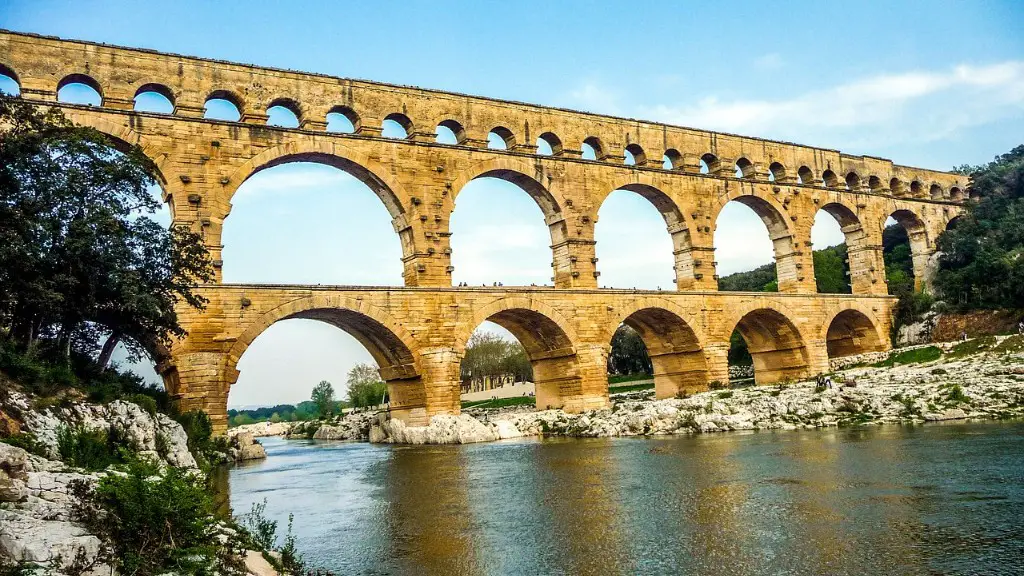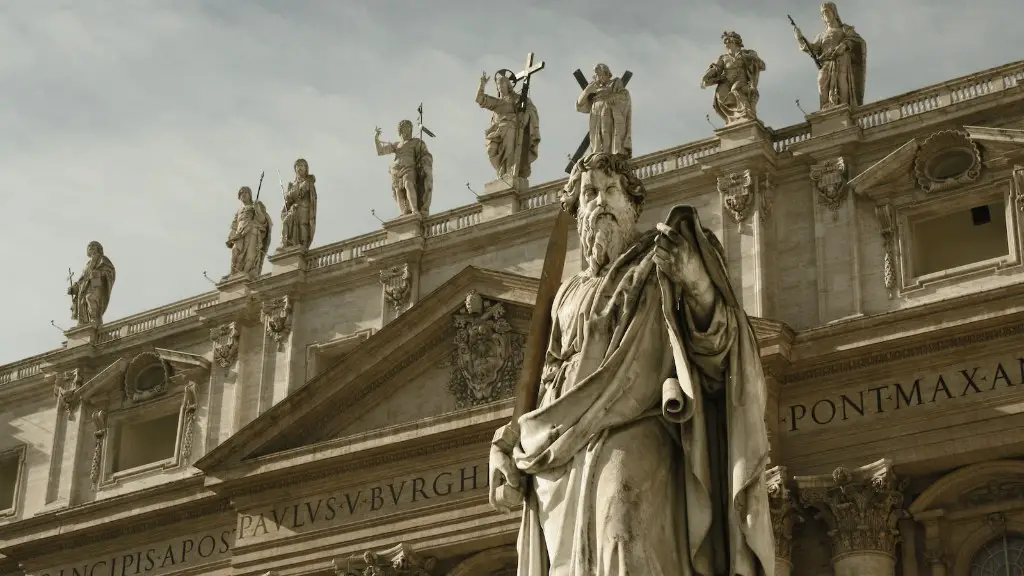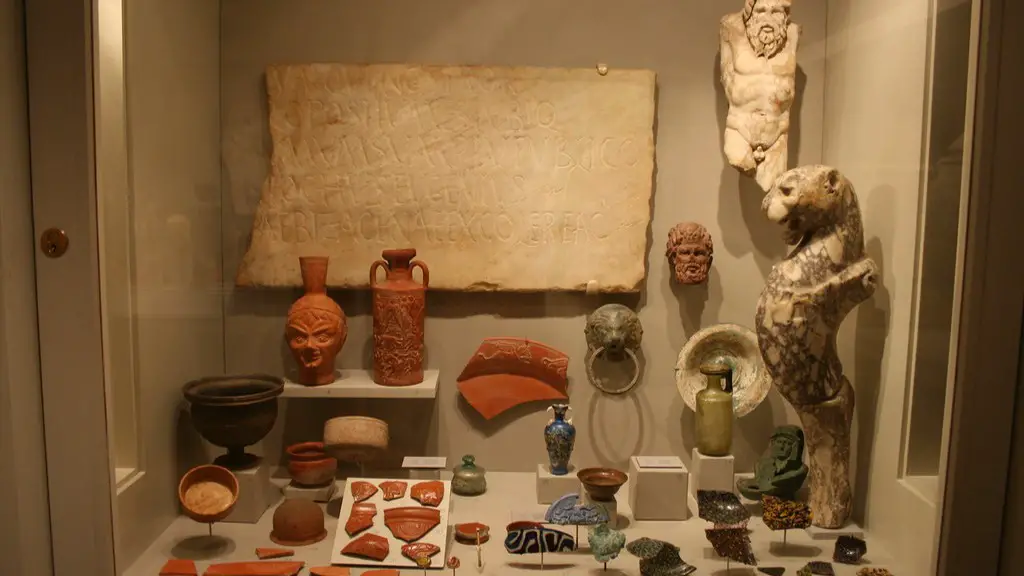Significance and Lasting Legacy
Ancient Rome is renowned for its architecture and many of its iconic buildings and monuments still stand today. The Colosseum, Pantheon, and both Trajan’s and Castel Sant Angelo are just some of the architectural landmarks that have seen the rise and fall of the Roman Empire. The impact and influence of Roman architecture can be seen in buildings around the world, even today. The city of Rome itself has a rich and varied architectural heritage, ranging from the ancient to the modern.
The impact of Roman architecture has been felt in many different ways throughout history. Ancient Roman builders employed different materials, design features, and construction techniques that are still seen in many modern buildings. Soaring arches and domes, intricate mosaics, and large public squares are all examples of technology and artistry from the Roman era.
The material used for Roman architecture was often volcanic tuff, a type of stone that is light and durable, making it ideal for many different building projects. Roman engineers also used concrete as a building material, which is still used extensively today for structures ranging from houses to bridges.
Types of Architectural Structures
The type of architecture seen in Rome varied based on the purpose of the building. Roman classicism became the main architectural style of the city, which focused on grandiose public buildings and structures built with a view to representing Roman power and influence.
Public buildings, such as the Colosseum, were designed to be grand and impressive, with an emphasis on curved lines and arches. Triumphal arches and large domes are examples of the types of architectural features often seen in Roman public buildings.
Private buildings were usually less grandiose, but still quite impressive. Many homes were often built around a central courtyard, with multiple levels of rooms surrounding it. Mosaics were often used to decorate the walls, floors, and ceilings of these homes, creating a truly beautiful aesthetic.
Influence Around the World
As the Roman Empire expanded, its architecture spread with it. Roman-influenced buildings can be found in countries around the world, from England to Turkey.
In England, several of the major cities have an abundance of Roman-influenced buildings, such as Bath and York. The city of Rome itself has continued to show its classicism and traditionalist approach to architecture until the modern period.
In North America, many government buildings and public structures take influence from classic Roman architecture, such as the US Capitol Building and the White House.
Even in South East Asia, influences can be seen in the grandiose buildings and temples of Thailand and Vietnam.
Modern Development
Modern Rome is still affected by its ancient architectural heritage, albeit in a different way. Many of the city’s major roads, such as the Via Veneto, are designed in a classic Roman style, with arches, columns, and large statues.
Modern American cities also show evidence of Roman influence, sometimes without people even realizing it. Many large buildings utilize classical Roman design features, from arches to pillars.
Overall, the lasting legacy of Roman architecture can be seen all around the world today. From the grandiose public buildings of the Roman period to the modern city streets, its influence can be felt everywhere.
Architects of the Time
The architects of ancient Rome such as Vitruvius, Apollodorus of Damascus, Andrea Palladio, and Sebastiano Serlio were some of the paramount innovators in their field. Vitruvius is one of the most renowned Roman architects, as he is responsible for classic Roman symbols such as the circular temple design with a central altar, a podium encircled by columns, and the arch form. Coming from a family of military engineers, he made significant discoveries in different fields such as mathematics, engineering, and architecture.
Apollodorus of Damascus, on the other hand, was not only an architect but also a civil and military engineer. He created the Roman Forum, which is a central gathering space for government and public activities, as well as its ivory-covered wooden ceiling. It is said to be one of Rome’s best-preserved public squares.
Then there is Andrea Palladio, a celebrated Italian architect known for his influences in the Renaissance period and his distinct style, known as Palladianism. Many of his designs make use of classic Roman elements such as the use of arches, pediments, and porticos. Several of his works are now considered UNESCO World Heritage Sites, such as the Villa Rotunda.
Lastly, Sebastiano Serlio was another important Italian architect who was dedicated to spreading the knowledge of Vitruvius’s works throughout Europe. He employed much of Vitruvius’s Roman architecture redefinitions such as his famous illustration of the five column orders ( Tuscan, Doric, Ionic, Corinthian, and Composite). These five orders are still used today when constructing buildings.
Recreating Ancient Rome
For those interested in recreating the architectural marvels of Ancient Rome, the task may be daunting. Rome slowly evolved over centuries and so many elements of its buildings are now lost forever. Different ages of the Roman Empire will have had a different style and the lack of building records or tools make it hard for us to understand what it truly was like.
The modern iteration of Roman architecture is far removed from the original and as such, recreating buildings of the era is a challenge. The aim of modern restoration is to repair and preserve, rather than recreate, but the challenge of faithfully replicating buildings lies in being able to construct something that looks and feels similar to the original.
The Roman Forum is a great example of how restoration is done in practice. Currently, the forum buildings are all supported by scaffolding, while missing portions of buildings are filled with different coloured stones to distinguish which parts were not part of the original structure.
Conservation Efforts
Preserving a city’s ancient structures is a huge challenge for many cities, especially those with Roman heritage. Much of the buildings have been damaged or destroyed over time, leaving only ruins and fragments.
Conservation organisations and campaigns have been created, to preserve what is left of Rome’s ancient ruins. Due to its immense historical and cultural importance, a great number of structures have been protected and restored over the years. The Colosseum, the Roman Forum, and the Pantheon are just some of the hundreds of sites that have been conserved and protected by conservation projects.
However, a great deal of effort and money is still required to maintain these sites, with many of them in need of repair and restoration. The sheer scale of these sites also means that it is difficult to preserve them in their entirety. Ultimately, it is up to city governments, organisations and private donors to come up with donations and plans to protect these sites and preserve them for future generations.
Preserving Ancient Rome’s Legacy
A great part of keeping the legacy of ancient Rome alive today is through education and awareness. Organizations, universities and museums regularly host events and exhibits which are dedicated to Rome’s past. They use them to educate the public about the city’s history, highlighting its many wonders and achievements.
Many online platforms also have a great impact on keeping Rome’s legacy alive. Several websites and social media accounts exist to share and discuss the city’s history and architecture, allowing people from all over the world to gain access to information about the city.
Ancient Rome’s legacy is further perpetuated through books, blogs and documentaries which recount the city’s grandeur and significant events. Such resources provide people with the opportunity to learn more about the city’s culture and its individual monuments.
Conclusion
Ancient Rome’s architecture has had an enduring impact on many cities and cultures around the world. From the use of volcanic tuff to concrete, the engineering and design techniques used by the Romans have inspired many of today’s buildings and monuments. Many of the sites are protected and preserved by law as a reminder of the many wonders of the Roman Empire and its grandeur. Ultimately, the legacy of Roman architecture is kept alive today through several organisations and initiatives which strive to educate and spread awareness about the city’s history and culture.


